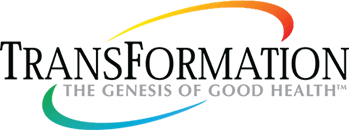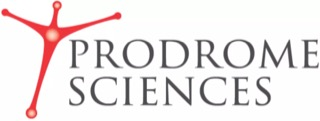Blog
Navigating Developmental Disorders

Navigating Developmental Disorders
Unraveling the Top 5 Common Challenges
Developmental disorders encompass a spectrum of conditions that affect various aspects of a person’s growth, both physically and mentally. These disorders often manifest in childhood and can significantly impact an individual’s daily life, learning abilities, and social interactions. Understanding the nature of these disorders is crucial for early identification, intervention, and support. Here, we explore the top five most common developmental disorders, shedding light on their characteristics, prevalence, and the challenges they pose.
Autism Spectrum Disorder (ASD):
Characteristics:
- Social Challenges: Difficulty in social interactions, forming relationships, and understanding nonverbal cues.
- Communication Difficulties: Delayed language development, limited speech, or unconventional communication methods.
- Repetitive Behaviors: Engaging in repetitive movements, adherence to routines, and intense focus on specific interests.
Prevalence:
- According to the Centers for Disease Control and Prevention (CDC), approximately 1 in 44 children in the United States is diagnosed with ASD.
- ASD is more common in boys than in girls, with varying degrees of impairment across the spectrum.
Intervention:
- Behavioral therapies, speech and language therapy, occupational therapy.
- Individualized educational plans and support.
Attention-Deficit/Hyperactivity Disorder (ADHD):
Characteristics:
- Inattention: Difficulty sustaining attention, easily distracted, forgetfulness.
- Hyperactivity: Excessive fidgeting, restlessness, difficulty staying seated.
- Impulsivity: Acting without thinking, interrupting others, difficulty waiting turns.
Prevalence:
- ADHD is one of the most common neurodevelopmental disorders in childhood.
- Estimated prevalence varies, but it affects around 5-7% of children worldwide.
Intervention:
- Behavioral interventions, psychoeducation for parents and teachers.
- Medication (stimulants or non-stimulants) may be prescribed in some cases.
Specific Learning Disorder (SLD):
Characteristics:
- Difficulties in Learning: Challenges in acquiring and using academic skills (reading, writing, mathematics).
- Performance Below Expectations: Achievement significantly below expected levels for age and intellectual ability.
- Persistency: The learning difficulty persists over an extended period.
Prevalence:
- Specific Learning Disorders are estimated to affect 5-15% of the population, depending on the specific disorder.
- Dyslexia, a type of SLD, is one of the most common learning disabilities.
Intervention:
- Individualized education plans with accommodations and modifications.
- Specialized educational strategies and interventions.
Characteristics:
- Cognitive Limitations: Below-average intellectual functioning (IQ below 70).
- Adaptive Functioning Challenges: Difficulties in daily living skills (communication, self-care, social interactions).
- Onset in Developmental Period: The condition manifests during the developmental period.
Prevalence:
- Intellectual Disability is estimated to affect around 1-3% of the population.
- Severity varies, and early intervention is crucial for optimal outcomes.
Intervention:
- Early intervention programs.
- Adaptive skill development, individualized educational plans.
Communication Disorders
Characteristics:
- Language Disorders: Difficulty in understanding or using words in context, limited vocabulary.
- Speech Sound Disorders: Challenges in pronouncing sounds or forming words.
- Social Communication Disorder: Impairments in using verbal and nonverbal communication for social interactions.
Prevalence:
- Communication Disorders are common in childhood and can persist into adulthood.
- Estimated prevalence varies based on the specific type of communication disorder.
Intervention:
- Speech and language therapy.
- Social skills training for those with social communication disorders.
Challenges in Addressing Developmental Disorders:
- Early Identification:
- Early identification of developmental disorders is crucial for effective intervention.
- However, some disorders, like ASD, may not manifest noticeable symptoms until later in childhood.
- Stigma and Misunderstanding:
- Stigma and misconceptions surrounding developmental disorders can hinder acceptance and support.
- Education and awareness are essential for fostering understanding and empathy.
- Comorbidity:
- Many individuals with developmental disorders may experience comorbid conditions, adding complexity to diagnosis and intervention.
- Comprehensive assessments are necessary to address multiple challenges.
- Access to Services:
- Disparities in access to services and resources exist, impacting the quality and consistency of interventions.
- Socioeconomic factors can influence the availability of specialized support.
- Transition to Adulthood:
- The transition from adolescence to adulthood poses unique challenges for individuals with developmental disorders.
- Continued support in education, employment, and social integration is crucial.
Support and Intervention Strategies:
- Multidisciplinary Approach:
- Collaborative efforts involving educators, healthcare professionals, therapists, and parents are essential.
- A comprehensive assessment helps tailor interventions to individual needs.
- Early Intervention Programs:
- Early intervention programs, such as Early Start services, play a critical role in addressing developmental challenges.
- Timely interventions can mitigate the impact of certain disorders.
- Educational Accommodations:
- Individualized education plans (IEPs) and 504 plans can provide necessary accommodations and modifications.
- Differentiated instruction helps meet diverse learning needs.
- Parental and Caregiver Support:
- Providing support and resources for parents and caregivers is essential.
- Parent training programs enhance skills in managing and advocating for their children.
- Community Inclusion:
- Promoting inclusion in schools, workplaces, and communities fosters a sense of belonging.
- Awareness campaigns reduce stigma and enhance understanding.
Conclusion:
Developmental disorders pose unique challenges to individuals and their families, necessitating a nuanced and compassionate approach to intervention and support. As our understanding of these disorders advances, there is a growing emphasis on early identification, personalized interventions, and a holistic view that considers the individual’s strengths and challenges. By fostering awareness, providing resources, and promoting inclusivity, society can contribute to a more supportive environment for those navigating the complexities of developmental disorders.
We hope you found the information provided by Thera-Mineral valuable and insightful. At Thera-Mineral, we are dedicated to offering high-quality supplements to support your health and well-being.
If you have any further questions, need additional information, or would like to explore our range of supplements, please don’t hesitate to reach out. You can contact us at our office located at 25216 Grogan’s Park Dr. Suite A, The Woodlands, TX 77380. Our friendly team is ready to assist you by phone at 855-472-2569 or via email at support@theramineral.com.
For your convenience, most supplements are available on our website, theramineral.com. However, if you don’t find a specific product on the site, our dedicated staff can help you place an order, and we’ll ensure it’s delivered to your place of choice.
We appreciate your trust in Thera-Mineral, and we look forward to being a reliable partner on your journey to optimal health. Thank you again for being part of our community!



















